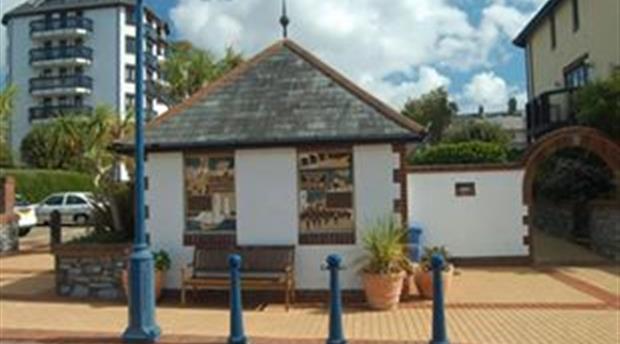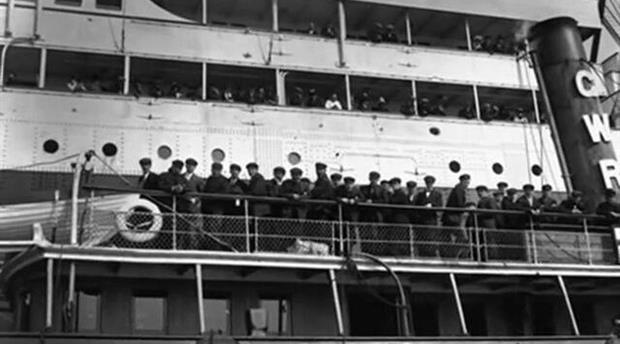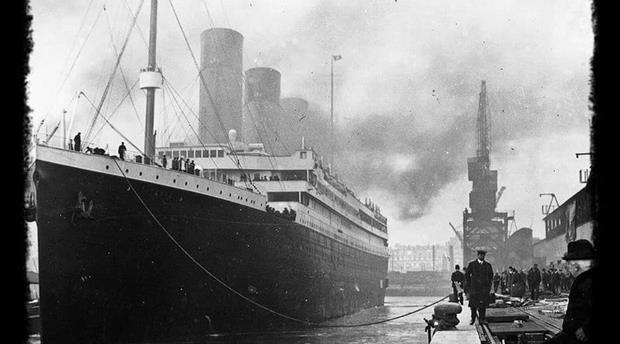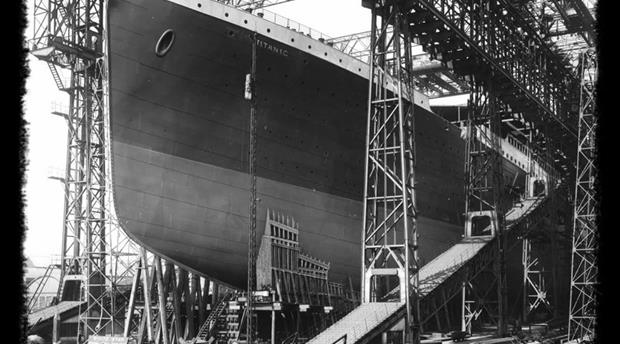This site uses cookies. By continuing to browse the site you are agreeing to our use of cookies. Read our privacy policy.
Titanic and the City of Plymouth




Large crowds gathered at Plymouth on the morning of 28 April, as the Red Star liner Lapland dropped anchor in Cawsands Bay.
The crowds were there to see the first sight of Titanic's surviving crew members.
The tender Sir Richard Grenville steamed out to Lapland to take off Titanic's surviving crew. Amongst the officials waiting on their arrival were two directors of the White Star Line and several representatives from the Board of Trade.
For many of the crew the return home was one filled with mixed emotions. They were the lucky ones. In the icy waters of the North Atlantic they had lost many friends but their journey home to family and friends was not to be as straightforward as they believed.
The Board of Trade intended to begin taking witness statements immediately but two visitors put an end to this. Thomas Lewis and Mr Cannon, President and Secretary of the British Seafarers' Union, requested permission to board Lapland with the White Star and Board of Trade officials to advise the crewmen of the impending legal proceedings but were refused access to their members.
Not easily put off by officialdom the two men chartered a small boat to take them out to Lapland and with the aid of a megaphone shouted instructions to Titanic's crew lining the rails of the liner not to speak with anyone before first consulting with the Union.
Despite the best efforts of the Union the crew was not released straight away but locked up in the docks behind iron gates and guarded by the Port's own police force. Warned by officials not to talk to the press, and denied access to visitors the crew was initially treated like suspects in a criminal investigation. The male crew members were quartered on makeshift bunks in the dock's waiting room; the twenty stewardess's faired much better, being booked into the Duke of Cornwall Hotel in the town.
Twenty stewardesses' gave their statements first. The crew was not told of any details of when they could return home. Each crew member was ordered to pledge his or her word of honour that they would not make any statements to the press. At 1.30pm the dock gates opened and 85 members of the crew were allowed to leave. The men, mostly able bodied seamen and firemen made their way to Plymouth Station to catch the 6pm train to Southampton. The remaining crew left behind were stewardesses, stewards, cooks and victualling assistants. Their travel plans were inexplicably cancelled. The following day, the rest of the crew was allowed to leave.
Plymouth Then and Now.
Plymouth has a rich and varied maritime history.
From the Pilgrim Fathers to Titanic the port has played an import role in our nation's maritime history.
Much of the built heritage of the docks area survives from the last century. The Hoe, where the Custom House and the Pier is situated, has been redeveloped in recent years with attractive waterfront apartments and a purpose built walkway to the Titanic Commemorative Plaque.
Over the years I've recorded photographically as much of this area as possible, before, during and after demolition and redevelopment.
Connections remain to this day. Titanic is always remembered as a terrible tragedy but the story of the survivors and in particular her crew are often overlooked. Plymouth played an important part in their story which was officially marked in April 2012 with the unveiling of a memorial to those that were lost and those survivors that landed at the port.
I always feel very proud of this great city and what we have on our doorstep; Millbay Docks, The Hoe, The Barbican, Devonport Dockyard all a short distance from beautiful Dartmoor.
Watch videos of the Titanic and it's Plymouth docking on Nigel's website and Facebook page, linked here.
Contact Details
Plymouth
Devon
Email: nigelvoisey@googlemail.com
Web: http://plymouthandtitanic.weebly.com/
